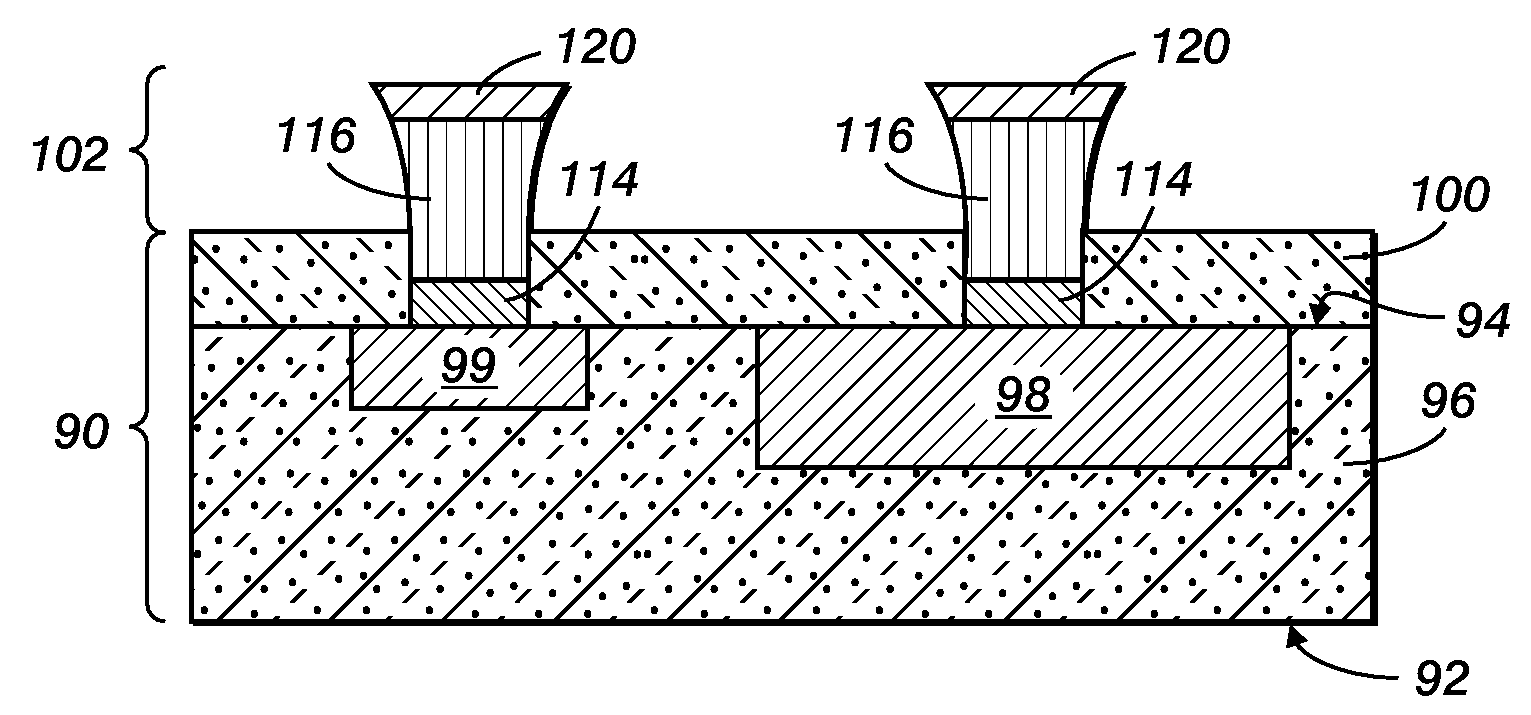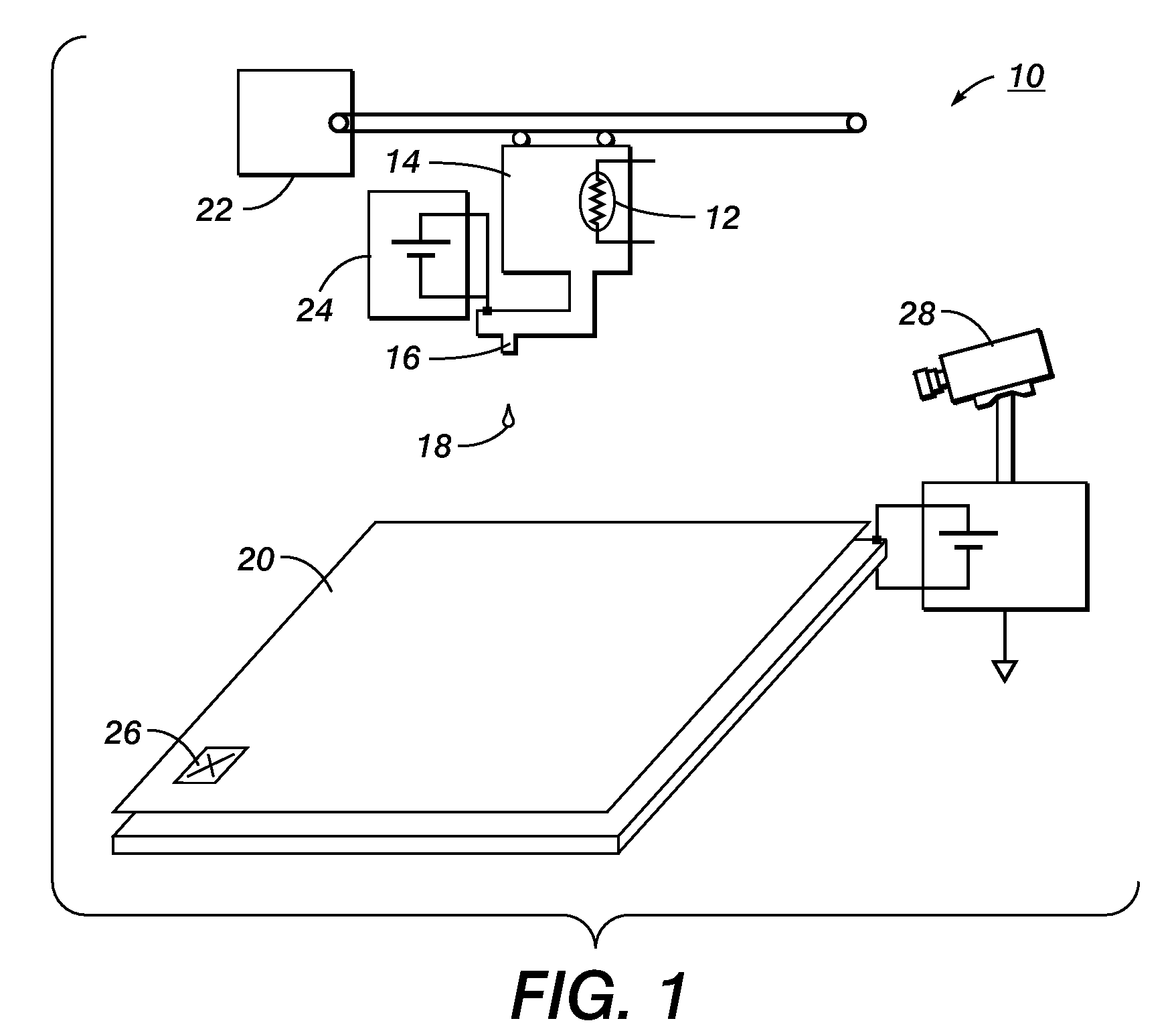Method of Forming Conductive Lines and Similar Features
a technology of conductive lines and similar features, applied in the field of digital lithography, can solve the problems of high cost, high processing cost, and disadvantages of each prior art process, and achieve the effects of reducing processing steps, high density, and high profil
- Summary
- Abstract
- Description
- Claims
- Application Information
AI Technical Summary
Benefits of technology
Problems solved by technology
Method used
Image
Examples
first embodiment
[0035]Described in the following section are specific steps for the formation of a print-patterned mask, and the production of structures formed with said mask. FIGS. 2 through 7 illustrate a device at several intermediate stages of its production according to a process illustrated in FIG. 8. While the following description makes specific reference to the device illustrated in FIGS. 2 through 7, without making more specific reference thereto the description is following the sequence illustrated in FIG. 8.
[0036]With reference to FIG. 2, the process of forming a mask on the front side of photosensitive substrate for the production of conductive lines for a solar cell is illustrated. The process begins with the preparation of the top surface 34 of a single- or poly-crystalline Si (e.g., p-type) substrate 32 for the deposition of various layers thereover. A layer 36 of Si (e.g., n-type) is formed over surface 34 by methods well known in the art. The polarities selected and used in this ...
second embodiment
[0048]FIGS. 9 through 14 illustrate a device at several intermediate stages of its production according to a process illustrated in FIG. 15. While the following description makes specific reference to the device illustrated in FIGS. 9 through 14, without making more specific reference thereto the description is following the sequence illustrated in FIG. 15.
[0049]With regard to FIG. 9, there is shown therein a back side structure 90 flipped upside down relative to its final operational orientation. That is, surface 92 is considered the front side of the structure, the side which is oriented toward light in order to receive photons. Processing described hereinbelow therefore is applied to the backside 94 of structure 90.
[0050]Backside structure 90 begins a single- or poly-crystalline Si substrate 96 having a first region 98 of first polarity (e.g., n type) and a second region 99 of second polarity (e.g., p+type) formed therein by methods well known in the art. A passivation / antireflec...
PUM
| Property | Measurement | Unit |
|---|---|---|
| Temperature | aaaaa | aaaaa |
| Electrical conductor | aaaaa | aaaaa |
| Phase | aaaaa | aaaaa |
Abstract
Description
Claims
Application Information
 Login to View More
Login to View More - R&D
- Intellectual Property
- Life Sciences
- Materials
- Tech Scout
- Unparalleled Data Quality
- Higher Quality Content
- 60% Fewer Hallucinations
Browse by: Latest US Patents, China's latest patents, Technical Efficacy Thesaurus, Application Domain, Technology Topic, Popular Technical Reports.
© 2025 PatSnap. All rights reserved.Legal|Privacy policy|Modern Slavery Act Transparency Statement|Sitemap|About US| Contact US: help@patsnap.com



